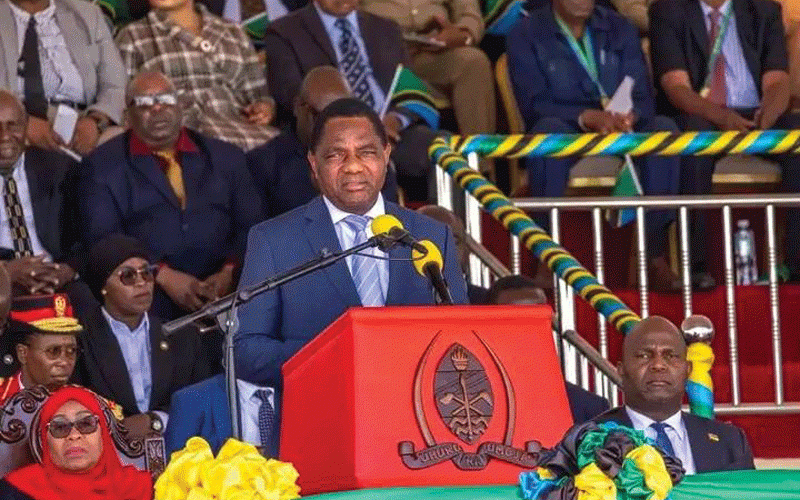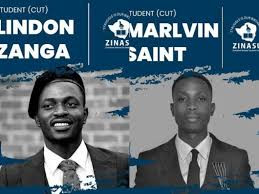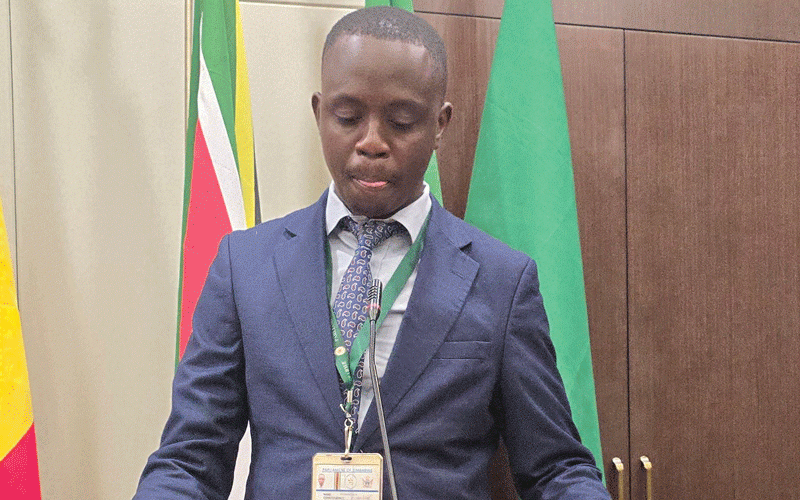
The constitution of Zimbabwe clearly stipulates (in section 328) that any amendments to the term limits that are imposed by the constitution must be approved by the people through a referendum.
It also clearly stipulates that an amendment of the constitutional term limit must not be applied to benefit the incumbent even if the constitutional change has been approved through a referendum.
The purpose of these provisions is to enable Zimbabwe to break ranks with the risk of political leaders potentially abusing the power of incumbency to remain in office and deny the country an opportunity to renew its leadership.
These constitutional provisions are also meant to guide Zimbabwe as she progresses towards transitioning in joining other nations in facilitating an enabling environment that supports renewal of leadership that maintains the national vision.
At its 21st annual national peoples’ conference held in 2024, Zimbabwe’s ruling party-Zanu PF- resolved to extend the current term of office of President Emmerson Mnangagwa from 2028 to 2030. This resolution is referred to as “the 2030 Agenda” in this opinion piece. Following this resolution, no legal measures were undertaken or triggered to implement it. As part of the resolutions of its 22nd annual national peoples’ conference held in October 2025, the ruling party directed the government to “initiate the requisite legislative amendments to give full effect to this resolution to ensure continuity, stability and the sustained transformation of the nation.”
The resolution to extend Mnangagwa’s current term to 2030 has left Zanu PF deeply divided and many Zimbabweans and regional actors are trying to make sense of the nature of these divisions, and they are also trying to understand whether it is legally and politically possible to extend Mnangagwa’s term without consulting citizens through a referendum. I attempt to address some of these questions in this opinion piece.
Understanding the nature of divisions in ZanuPF is important for political and civil society advocacy on this issue. Zanu PF is divided between those who support the 2030 Agenda and those who are opposed to it.
These two factions are currently engaged in an open and public political contest. However, the divisions transcend this dichotomy of those opposed and those in favour. T
- Unpacking environmental laws for real estate in Zimbabwe
- Village Rhapsody: Govt must ensure that devolution works
- Unpacking environmental laws for real estate in Zimbabwe
- Gukurahundi public hearings: A breakthrough or a political gimmick?
Keep Reading
here are some who are seating on the fence. This group can be characterised as “the moving wave” which follows the direction the strongest (political) wind blows at each time. This group constitutes of Zanu PF leaders who (amongst other reasons) are waiting to jump onto the faction that will emerge victorious out of this contest.
For example, when Vice President Constantino Chiwenga challenged the 2030 agenda in the Zanu PF politburo meeting held in October 2025, his stance was followed by a wave of Zanu PF leaders and activists who (though they were previously not vocal on the matter) joined him by publicly expressing their disapproval of extending Mnangagwa’s term.
Those leading the 2030 agenda responded by openly rebuking Chiwenga, and they secured a resolution (at the 2025 Zanu PF conference) directing the party and government to undertake necessary measures to implement the 2030 agenda. This was a significant show of force which was followed by another wave of fence seaters who became vocal in their support for the 2030 agenda.
However, those who are campaigning to extend Mnangagwa’s term are deeply divided because there are various political actors in their camp who have competing interests.
For some in this faction, extending Mnangagwa’s current term is a strategic move to continue looting the state or using the same to loot resources from other countries. However, several actors who are part of this faction are interested in succeeding Mnangagwa.
They hope that, by extending Mnangagwa’s term, they will be able to force Chiwenga out of the race either by frustrating him until he resigns or by convincing Mnangagwa to expel him from his position for ‘lack of loyalty to the president’ as evidenced by his position to oppose the idea to extend the president’s term.
However, ZANU-PF leaders within the broader 2030 agenda also perceive each other as rivals because, after excluding Chiwenga, each of them wants to be strategically positioned to succeed Mnangagwa. Therefore, there appears to be a fierce contest within the broader 2030 Agenda faction between sub-factions. It appears that this contest has led to each sub-faction (within the 2030 agenda group) coming up with its own proposal on how to extend Mnangagwa’s term but in a way which safeguards the sub-faction’s own broader political interest which is to succeed Mnangagwa.
One distinct group that has emerged within the 2030 Agenda is led by those whose proposal is to extend Mnangagwa’s current term without amending the term limits in the constitution
Their idea seems to be to convince Mnangagwa to resign from the Office of the State President before serving three years into his current term, and return to contest the 2028 elections.
Legally, this is possible because in terms of section 91(2) of the constitution, if Mnangagwa resigns before September 6 2026, he will still be eligible to contest in the 2028 presidential election and return to serve another full five year term, if he wins that election.
In the event of Mnangagwa’s resignation from office, ZANU-PF is entitled under the constitution to elect a replacement (similar to what they did in 2017 when they forced former president Robert Mugabe to resign) and the replacement could be immediate and also could be anyone the party chooses.
In the event that Mnangagwa resigns, he may still be able to run the government from the party as the Zanu PF party president with an aid of a stooge (place holder) state president.
This may be the reason why when the party adopted the resolution to extend the term of the president in 2024 as resolution number 1, they also adopted as resolution number 2, the directive to establish a framework that would ensure that the party becomes supreme to the government.
This particular resolution (2) might have been adopted as part of convincing Mnangagwa that he can run the government from the party while waiting to return and contest in the 2028 presidential election.
In order for this strategy to work, this faction would need to identify someone who is willing to act as a stooge or place holder president between September 2026 and March 2028 when the next election is due.
It appears that various names were proposed for this. This might explain why sometime in 2024, there was an attempt to co-opt the current (and soon to reach retirement age) Zimbabwe Defence Forces commander, Valerio Sibanda, into the party’s politburo.
Curiously, this resolution was reversed. There might as well be several other reasons, including the need to keep the man in charge of the army as a way of coup proofing the president’s administration. As was later confirmed publicly by Zanu PF spokesperson, Christopher Mutsvangwa, there was an attempt to remove the president through a coup in 2025.
The attempt to co-opt Sibanda into the Zanu PF politburo was followed by a similar move to co-opt Kudakwashe Tagwirei- a mogul whose businesses (are reported) to have benefited immensely from his links with Zanu PF and he has since been vocal in supporting the extension of Mnangagwa’s term to 2030.
*Dr Justice Mavedzenge is a comparative constitutional law scholar and lawyer










